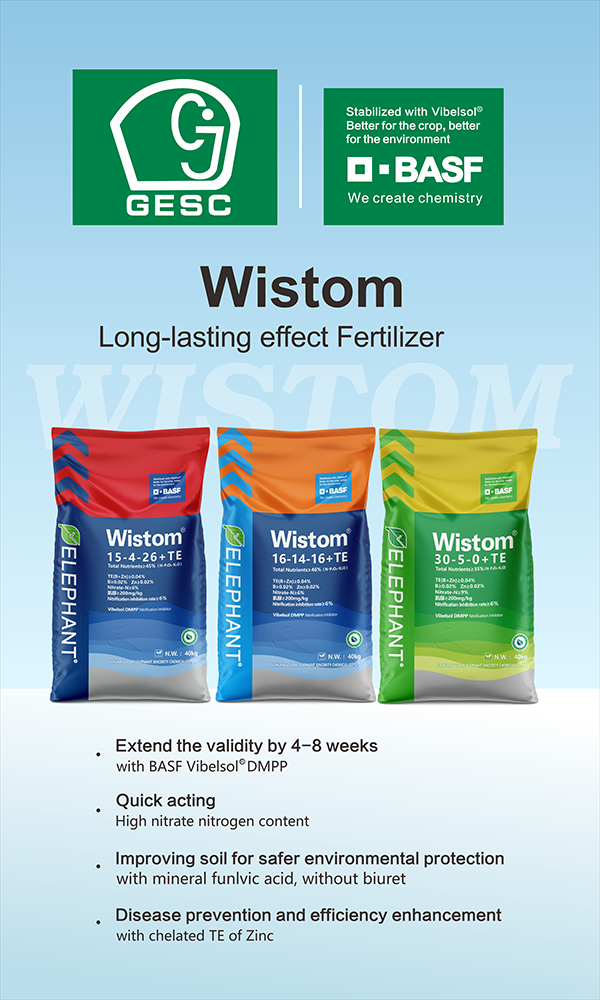Agricultural growers are likely familiar with biuret to some extent, as fertilizers containing biuret can easily cause root and seedling burn. Nowadays, fertilizer bags often display labels indicating whether they contain biuret. So, what exactly is this substance? How is it produced? What impact does it have on agricultural products? And which products are biuret-free? Today, we’ll provide some insight into this topic.
1. What is Biuret?
Biuret, also known as carbamylurea, is a compound formed during the high-temperature chemical reaction of urea molecules. In China, common compound fertilizer production techniques include tower granulation, drum granulation, and ammoniation granulation, all of which involve temperatures above 130°C. Urea is typically chosen as the nitrogen source in these processes. If the production process fluctuates or is not well-controlled, the biuret content in the fertilizer can increase, leading to potential fertilizer damage. In short, biuret is a byproduct formed during the production of urea-based or urea-sourced compound fertilizers when the process is improperly managed.
2. The Hazards and Prevention of Biuret1) Biuret can inhibit and damage the capillary roots of seedlings, and even mature trees' capillary roots can be harmed, reducing the absorption of nutrients by crops.

Excessive application can cause root and seedling burn, yellowing of leaf tips, and in severe cases, wilting and leaf drop. Research has shown that for citrus crops, a biuret accumulation of over 0.25% can cause yellowing and brittleness of leaf tips, as well as mottled leaves, reducing photosynthesis and leading to early leaf aging and drop, which negatively impacts flowering and fruiting.

To mitigate these effects, China mandates that the biuret content in fertilizer-grade urea should be less than 0.5%. When biuret content exceeds 1%, the product should not be used as seed, seedling, or foliar fertilizer. During other application periods, the urea content should also not be excessive or too concentrated. To prevent biuret toxicity in fruit and vegetable crops, consider these guidelines: do not use a single type of fertilizer for a long time; alternate with other nitrogen fertilizers and use multi-element fertilizers to promote balanced nutrition. The application concentration should not be too high; for root irrigation, the concentration should be 1% to 2%, and for foliar application, it should be 0.3% to 0.5%. High concentrations can damage roots.
3. Eliminating Biuret: Changing the Nitrogen Source is Key
Since biuret is produced during the manufacture of urea-based or urea-sourced compound fertilizers, the most direct way to avoid biuret toxicity is to use less or no urea at all. To completely eliminate biuret from fertilizers, the nitrogen source must be changed. By not using urea as a nitrogen source, compound fertilizers will not produce biuret.
GESC-RUIXIANG's nitro compound fertilizer is made using natural gas to produce synthetic ammonia, which is then used to produce nitric acid. The nitric acid neutralizes melamine tail gas to create a 93% ammonium nitrate solution, containing nitrate nitrogen and ammonium nitrogen. This mixture is then combined with phosphorus or potassium fertilizers, sulfur, calcium, magnesium, boron, zinc, and other essential elements. Using advanced tower granulation technology, this high-concentration compound fertilizer is produced. Since ammonium nitrate is the nitrogen source and urea is not used at any stage, biuret cannot form, and the product packaging is labeled "biuret-free."
4. Why GESC-RUIXIANG Products Do Not Contain Biuret
GESC-RUIXIANG’s high-tower nitro compound fertilizers do not contain biuret because they utilize ammonium nitrate as the nitrogen source. In general, a nitro fertilizer contains more than 4% nitrate nitrogen. In GESC-RUIXIANG products, the nitrate nitrogen content is usually more than 6%. When mixed with urea (biuret), it reacts and dissolves into a watery substance, preventing the formation of compound fertilizer granules. Therefore, GESC-RUIXIANG high-tower nitro fertilizers cannot contain biuret.
5. Enhancing Quality and Yield: Proper Use of Nitro Fertilizers
Nitro fertilizers are highly effective and widely used worldwide. In comparison to other countries, China’s use of nitro fertilizers in nitrogen fertilizers is relatively low at only 4%. In countries like the USA, Brazil, France, Poland, Russia, and Israel, the proportions are 13%, 16%, 28%, 31%, 40%, and 47%, respectively. Nitro compound fertilizers have seen rapid development in China due to the need for increased efficiency and environmental concerns. These fertilizers are reliable, easy to use, environmentally friendly, and high in nutrient content. They have the following advantages: 1) Fast-acting: Quickly promotes crop growth. 2) Significant yield increase: High fertilizer use efficiency, beneficial for vegetable and fruit growth and enlargement, with a yield increase of 8-25% compared to the same amount of single nitrogen fertilizer. 3) Quality improvement: Increases the content of protein, soluble sugars, and vitamins in agricultural products, improving color and taste. 4) Drought resistance: Enhances the drought resistance and water retention of crops. 5) Soil activation: Prevents soil compaction and effectively improves soil conditions.

Compared to traditional compound fertilizers, nitro fertilizers have a faster effect and higher absorption rate, along with anti-soil compaction properties. Unlike urea, which loses some of its nitrogen during the conversion process (causing environmental pollution and fertilizer loss), nitrate nitrogen in nitro fertilizers is directly absorbed by crop roots without needing further conversion.
GESC-RUIXIANG has been specializing in nitro fertilizers for many years, with advanced high-tower nitro fertilizer production technology and research capabilities. With over 50 years of agricultural experience, the company understands the nutritional needs of crops and scientifically formulates fertilizers to help countless Chinese farmers improve quality and increase yields.

However, even the best fertilizers must be used correctly and scientifically. When applying nitro fertilizers, note the following:
1). Avoid over-application. Excessive use can lead to high salt concentration, causing crop dehydration and affecting normal growth.
2). Use less in hot weather. For greenhouse crops, apply small amounts multiple times.
3). Do not apply directly to seeds, roots, or leaves. The cooling effect during the melting process can cause frost damage to crops.
4). Do not mix with alkaline substances. This can cause a reaction that produces ammonia gas, reducing fertilizer efficiency.
Post time: May-30-2024